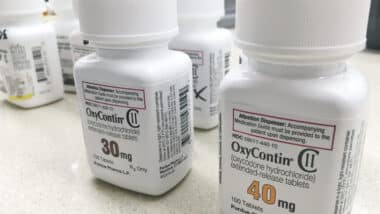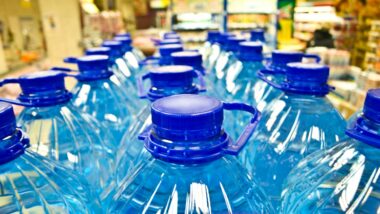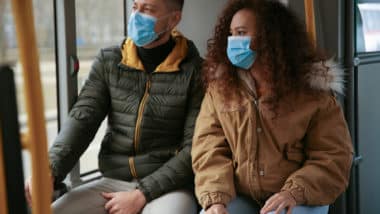
The National Institute for Occupational Safety and Health is part of the Centers for Disease Control and Prevention (CDC) and evaluates issues that affect the health and safety of employees in the workplace.
What is NIOSH?
The National Institute for Occupational Safety and Health was established by the Occupational Safety and Health Act of 1970. This act created NIOSH as a research agency governed by the Health Service & Mental Health Administration, with the primary goals of determining the issues affecting worker health and safety, and empowering workers and their employers to advocate for safe workplaces. In 1973, the organization was transferred to the CDC.
What is the National Institute for Occupational Safety and Health’s Mission?
NIOSH’s mission is to provide a safe and healthy work environment for every person in the U.S. by continuing to research the fields of occupational health and safety and transform the knowledge gained from this research into practice.
NIOSH’s current objectives are to track work-related illnesses, injuries, and hazards, use research findings to create guidelines and policies, and improve worker health and safety through collaborations with employers. NIOSH may investigate workplaces for potential violations, make recommendations on improving workplace safety, and provide training to health and safety workers. Workers in many types of occupations are employed by NIOSH, including epidemiologists, nurses, psychologists, statisticians, chemists, economists, and engineers.
What is the Difference Between OSHA and NIOSH?
Although the National Institute for Occupational Safety and Health and the Occupational Safety and Health Administration (OSHA) have similar goals, the two agencies work in different ways. While OSHA is a regulatory agency focused on enforcing safety and ensuring that workplaces are in compliance with occupational safety laws, NIOSH is centered on research and health.
NIOSH also tends to look at chronic issues that affect large swaths of workers. Once NIOSH has determined what issues may be affecting workers in a given occupation and made recommendations about how to better protect them, OSHA will step in to determine how to enforce the regulations.
Workers who believe their employer may be in violation of NIOSH or OSHA regulations may file a NIOSH or OSHA complaint.
What NIOSH Standards Should My Employer Be Following?
NIOSH has different regulations for different occupational fields, as well as regulations pertaining to certain topics. In addition to providing specific standards for industries such as coal mining, dentistry, airlines, health care, and fire fighting, NIOSH also sets standards for a variety of issues that workers in many occupations may encounter. These standards include protocols for handling the seasonal flu, chemical exposure, tobacco and drug exposure, latex allergies, and more. Workers who are concerned that their employer may be in violation of NIOSH regulations may review NIOSH’s webpage for health and safety topics.
Workers may also request that NIOSH conduct a health hazard evaluation of their workplace. These evaluations are meant to help employers and employees recognize and respond to potential health hazards in their specific workplace. NIOSH may evaluate many types of hazards during these visits, including exposure to chemicals, noise, particulates, radiation, heat, and stress. Although NIOSH cannot enforce any recommended changes, the agency claims that most employers follow its recommendations.
There is no cost associated with a NIOSH health hazard evaluation, and employees are able to request a visit from NIOSH confidentially. Employees who wish to request a health hazard evaluation may do so online, over the phone, or through email.
Safety Agencies Provide Guidance on Managing COVID-19
The CDC, NIOSH, and OSHA developed protocols for businesses, manufacturing workers, and industry-specific workers and their employers to help decrease the impact of COVID-19, the new coronavirus responsible for the worldwide pandemic.
Business offices are advised to conduct daily health checks (temperature and symptoms) and to encourage employees to wear cloth face coverings while at the office, if appropriate. Companies are responsible for implementing and ensuring adherence to social distancing in the workplace and are advised to improve the building’s ventilation system to stop the spread of respiratory droplets through the air.
By conducting daily in-person or virtual health checks of each employee prior to them entering the facility, potentially ill people can be kept out of the office. It’s important to keep in mind, though, that symptoms may not appear for five to 14 days after initial exposure to COVID-19 and that up to 35 percent of all cases are asymptomatic. In other words, a person can be very contagious with COVID-19, but never feel or appear visibly ill.
According to the CDC, most facilities won’t need to completely shut down if an employee has a suspected or confirmed case of COVID-19. If it’s been fewer than seven days since the ill employee has been inside the office, the CDC recommends closing off any areas that the person used for a prolonged length of time. Then:
- Wait 24 hours before cleaning and disinfecting to minimize the potential for other employees to be exposed to respiratory droplets.
- During the waiting period, doors and windows should be opened for as long as possible to increase fresh air circulation in the area.
If it’s been seven days or more since the ill employee was in the building, additional cleaning and disinfection aren’t needed, but employers are advised to continue routinely cleaning and disinfecting all high-touch surfaces in the building.
Did NIOSH Investigate OxyCide Cleaning Products?
Yes, the National Institute for Occupational Safety and Health looked into reports that OxyCide could cause breathing difficulties, watery eyes and wheezing among healthcare workers who use the medical-grade cleaning agent.
OxyCide first became available in 2013 when EcoLab manufactured and distributed the product to more than 500 hospitals. Now widely used across the country, OxyCide became popular because of its ability to destroy everything from viruses and bacteria, including the spore-producing Clostridiodes difficile (C-diff), which is a particularly virulent bacterium that causes diarrhea and colon inflammation.

The main active ingredients in Oxycide are acetic acid, peroxyacetic acid and hydrogen peroxide. The solution is made to be diluted with water to establish a certain pH level before use.
In its investigation, NIOSH found that the air samples contained acceptable amounts of hydrogen peroxide and of acetic acid, but there is no recommended level of exposure established for peroxyacetic acid. NIOSH said the mixture of all three ingredients could have led to symptoms experienced by the workers even though individually, the chemicals appeared to measure within acceptable levels in the air.
Workers who used OxyCide reported more symptoms than those who did not use it, and workers who used OxyCide reported an improvement in their symptoms when they had a day off or when they were on vacation, NIOSH said.
How to File a NIOSH Report
If you believe that your company may be violating NIOSH or OSHA standards, you may report these violations to OSHA. In addition to reporting potential NIOSH or OSHA violations, employees may also request an OSHA inspection of the workplace. Employees who believe their employer may be violating their health and safety rights have the right to report these violations confidentially.
If you have already reported your employer to OSHA for health and safety violations and have been demoted, fired, or otherwise retaliated against by your employer for doing so, you may be able to file a complaint with OSHA.
Workers subjected to NIOSH or OSHA workplace safety violations may also be eligible to hire a qualified attorney to review their case and determine whether they qualify to file a class action lawsuit against their employer. Those who pursue litigation for health and safety violations may be able to recover compensation for injuries, pain and suffering, or medical expenses caused by these violations.
Join a Free OxyCide Cleaner Side Effects Lawsuit Investigation
If you worked in a hospital that used OxyCide cleaning products and suffered side effects from exposure to the disinfectant, you may qualify to join a FREE OxyCide cleaner side effects lawsuit investigation.
Fill out the form on this page for more information.
This article is not legal advice. It is presented
for informational purposes only.
ATTORNEY ADVERTISING
Top Class Actions is a Proud Member of the American Bar Association
LEGAL INFORMATION IS NOT LEGAL ADVICE
Top Class Actions Legal Statement
©2008 – 2026 Top Class Actions® LLC
Various Trademarks held by their respective owners
This website is not intended for viewing or usage by European Union citizens.
Get Help – It’s Free
Join a Free OxyCide Cleaner Side Effects Lawsuit Investigation
If you qualify, an attorney will contact you to discuss the details of your potential case at no charge to you.
PLEASE NOTE: If you want to participate in this investigation, it is imperative that you reply to the law firm if they call or email you. Failing to do so may result in you not getting signed up as a client or getting you dropped as a client.
E-mail any problems with this form to:
[email protected].
Oops! We could not locate your form.












